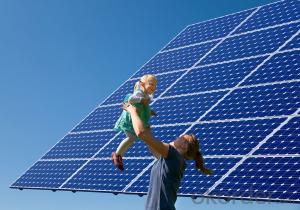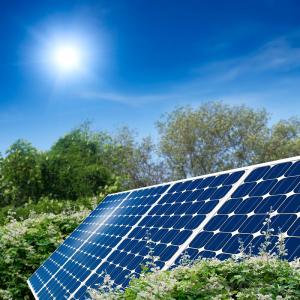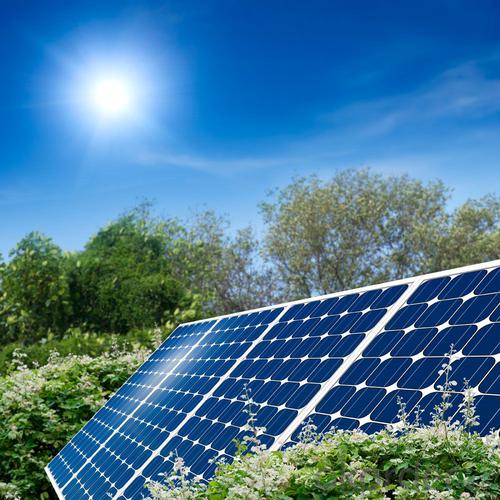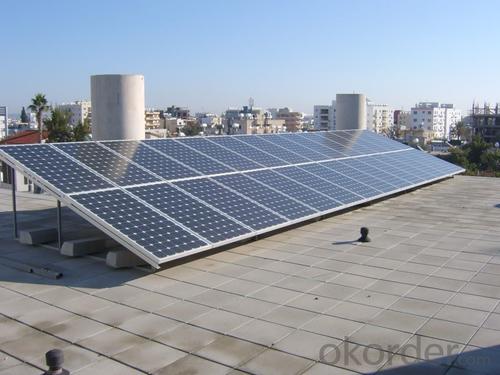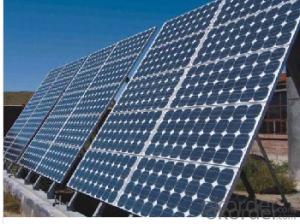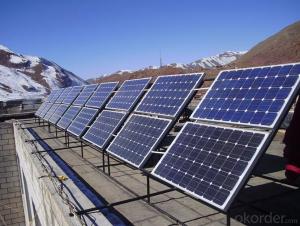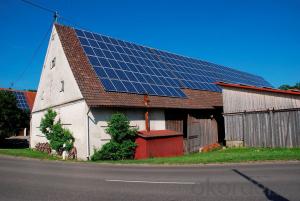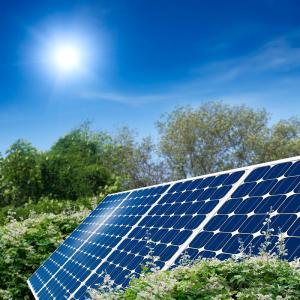Solar Panels New Monocrystalline Silicon 240w Solar Module
- Loading Port:
- China main port
- Payment Terms:
- TT OR LC
- Min Order Qty:
- 100000 watt
- Supply Capability:
- 10000000 watt/month
OKorder Service Pledge
OKorder Financial Service
You Might Also Like
As a solar brandoriginated from America (USA) with production bases in USA, China, Taiwan andVietnam, Amerisolar is taking more competitive strategies based on its Leading Technology, High Quality, No Anti-dumping Tariff prices and worldwide Door-to-Doorlogistics services.
Quality Certificates
IEC61215, IEC61730, IEC62716, IEC61701, UL1703, ETL, JET, CE, MCS,
CEC, Israel Electric, Kemco
ISO9001:2008: Quality management system
ISO14001:2004: Environmental management system
OHSAS18001:2007: Occupational health and safety management system
Amerisolar’s photovoltaic modules are designed for large electrical power requirements. With a 30-year warranty, AS-6P offers high-powered, reliable
performance for both on-grid and off-grid solar projects.
Key features:
Low degradation and excellent performance under high temperature and low
light conditions.
Robust aluminum frame ensures the modules to withstand wind loads up to
2400Pa and snow loads up to 5400Pa.
Positive power tolerance of 0 ~ +3 %.
High ammonia and salt mist resistance.
Mono 240w with high module conversion efficiency and high quality. Meanwhile all panels have positive power tolerance of 0 ~ +3 %.
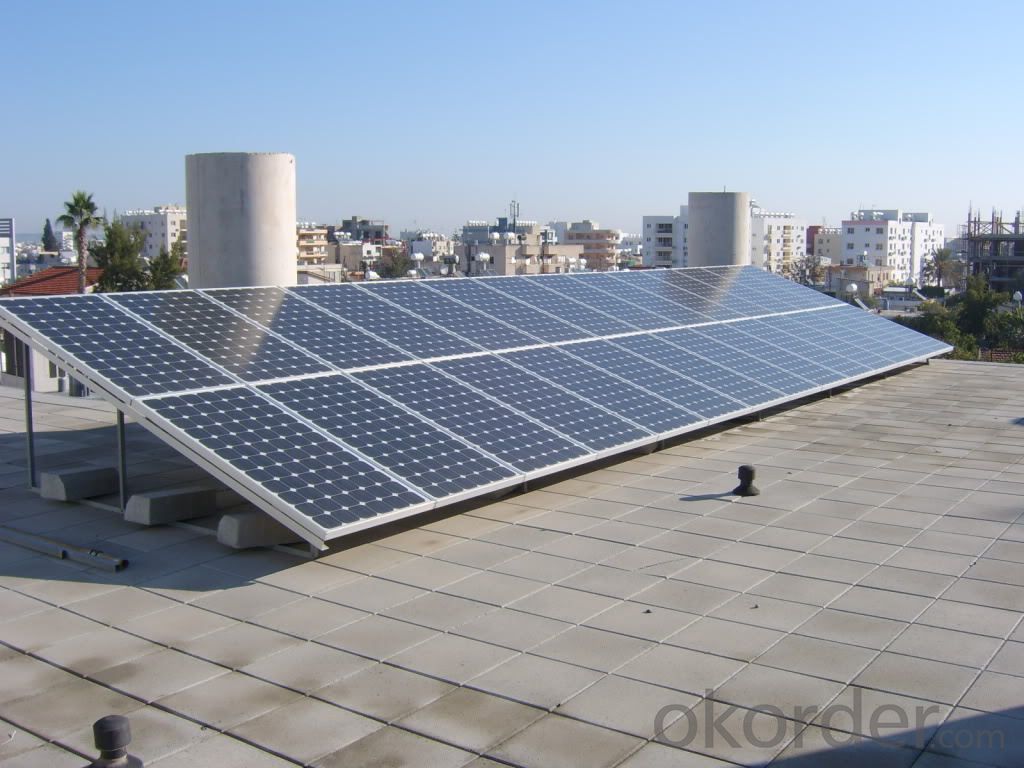
Solar cell module production process
Line called packaging line components, packaging is the production of solar cells a key step in the packaging process without a good, multi-well battery is also not a good component of production boards. Battery package not only the battery life is guaranteed, but also to enhance the combat strength of the battery. Product quality and high service life is to win can be the key to customer satisfaction, so the quality of components of the package board is very important.
Process is as follows:
1, the battery test
2, positive Welding - Inspection –
3, on the back of cascading - Inspection –
4, laying (glass cleaning, material cutting, glass pre-processing, laying) –
5, laminating –
6, to flash ( to the side, cleaning) –
7, fitted border (glue, loading angle keys, punching, install box, scrub I glue) –
8, the welding junction box –
9, high-pressure test –
10, component testing -- -
11 appearance inspection, packaging and storage;
- Q: I want to know how you can store energy using a solar panel. The energy stored needs to be stored so that a light or laptop charger can plug in to it.
- Batteries my man... but you will need a charge controller the silicon panel will produce dc and you will need an inverter for an ac light
- Q: How do solar panels affect the aesthetics of a building?
- Solar panels can have both positive and negative effects on the aesthetics of a building. On one hand, well-designed and integrated solar panels can enhance the visual appeal of a structure by adding a sleek and modern touch. They can be seamlessly incorporated into the architecture, becoming an attractive feature. On the other hand, if poorly installed or placed without careful consideration, solar panels can disrupt the overall design or appear as an eyesore. Therefore, the impact of solar panels on a building's aesthetics largely depends on the design, placement, and integration of the panels into the existing structure.
- Q: Can solar panels be used to power a concert venue?
- Yes, solar panels can be used to power a concert venue. By installing a sufficient number of solar panels, a concert venue can generate enough renewable energy to meet its power needs. This helps reduce the reliance on traditional energy sources, lowers carbon emissions, and promotes sustainability in the music industry.
- Q: How do solar panels impact wildlife?
- Solar panels can have both positive and negative impacts on wildlife. On the positive side, solar panels provide clean and renewable energy, reducing dependence on fossil fuels and mitigating climate change, which can have indirect benefits for wildlife populations. Additionally, solar panels can create new habitats for certain species, such as birds, by providing perching and nesting opportunities. However, there are also potential negative impacts to consider. Solar farms can disrupt and fragment natural habitats, displacing or causing harm to certain species. Birds may be at risk of collision with solar panels, although proper installation and design can help mitigate this issue. To minimize these negative impacts, it is important to carefully plan and design solar projects, taking into account wildlife conservation and habitat protection measures.
- Q: Can solar panels be installed on parking lots or garages?
- Yes, solar panels can be installed on parking lots or garages. In fact, these locations are ideal for solar panel installations as they provide ample space for the panels and can harness the solar energy efficiently. Additionally, installing solar panels on parking lots or garages can also provide shade for vehicles and reduce energy costs for the facility.
- Q: How do solar panels affect the homeowner's insurance policy?
- Solar panels can have an impact on a homeowner's insurance policy as they are considered an additional structure or improvement to the property. While they may increase the overall value of the home, they also introduce potential risks such as damage from storms or accidents. Homeowners should inform their insurance provider about the installation of solar panels to ensure adequate coverage and potentially adjust their policy accordingly.
- Q: How do I clean my solar panels?
- To clean your solar panels, you can start by rinsing them with a garden hose to remove any loose dirt or debris. If there are tougher stains or bird droppings, use a soft sponge or cloth with mild soapy water to gently scrub the surface. Avoid using abrasive materials or harsh chemicals that could damage the panels. Additionally, make sure to turn off the system and use caution when climbing on the roof. Regular cleaning every few months can help maintain optimal performance of your solar panels.
- Q: Can solar panels be installed on a hotel or hospitality establishment?
- Yes, solar panels can be installed on a hotel or hospitality establishment. In fact, many hotels and hospitality establishments are increasingly adopting solar energy systems to reduce their reliance on traditional energy sources and decrease their carbon footprint. Installing solar panels on these establishments can help generate clean and renewable energy, lower energy costs, and showcase their commitment to sustainability.
- Q: Can solar panels be used in multi-story buildings?
- Yes, solar panels can be used in multi-story buildings. They can be installed on rooftops or other suitable areas to generate renewable energy for the building.
- Q: Can solar panels be installed on a high-rise building?
- Yes, solar panels can be installed on a high-rise building. In fact, high-rise buildings offer great potential for solar panel installations due to their large surface area and access to sunlight. However, it is important to consider factors like structural integrity, shading, and local regulations while designing and installing solar panels on high-rise buildings.
Send your message to us
Solar Panels New Monocrystalline Silicon 240w Solar Module
- Loading Port:
- China main port
- Payment Terms:
- TT OR LC
- Min Order Qty:
- 100000 watt
- Supply Capability:
- 10000000 watt/month
OKorder Service Pledge
OKorder Financial Service
Similar products
Hot products
Hot Searches
Related keywords
